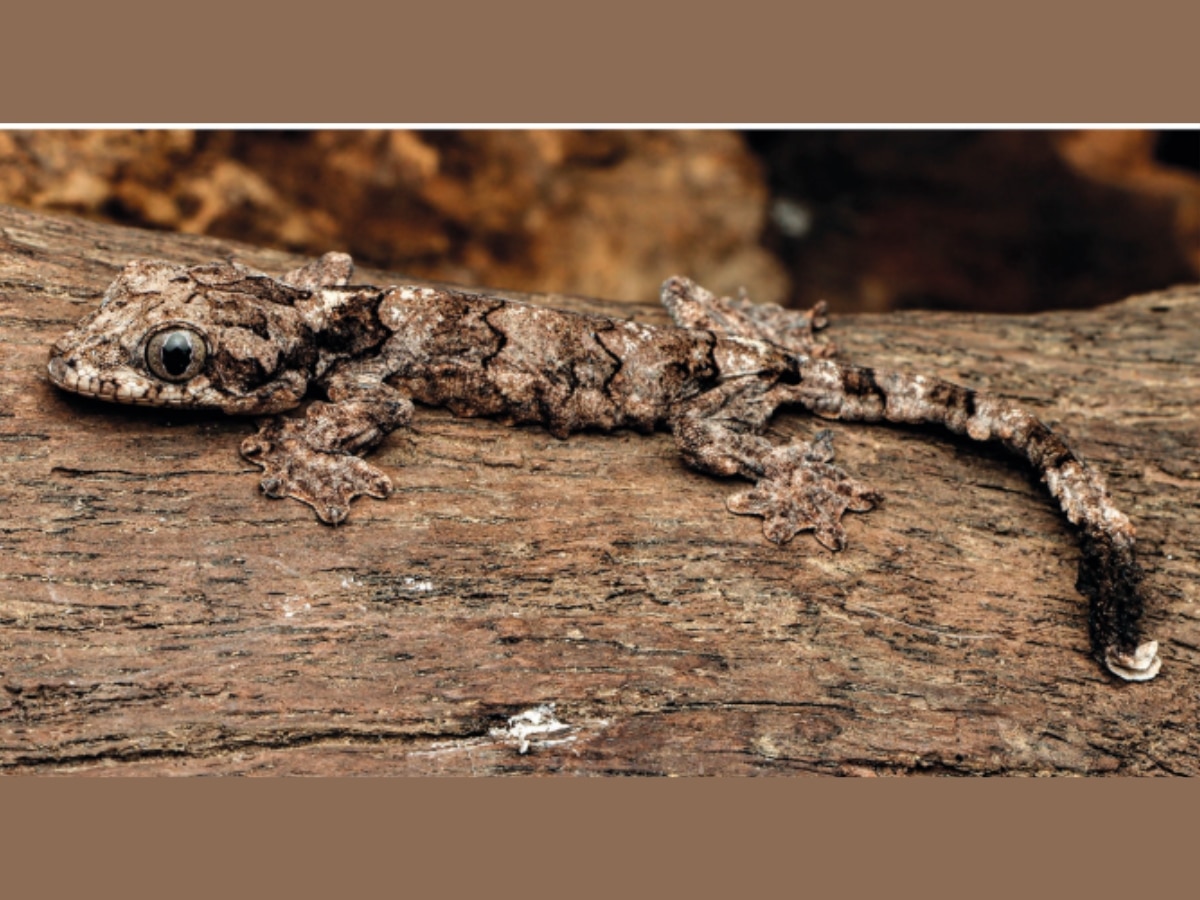[ad_1]
A flying gecko species has been newly identified in Mizoram. Named the Mizoram parachute gecko, or Gecko mizoramensisThe species is one of 14 gecko species known to be able to fly. The newest member of the world’s oldest group of lizards, geckos, unravels the hidden and underappreciated biodiversity of northeast India.
The study describing the Mizoram parachute gecko was recently published in the journal Salamandra.
The new species will encourage greater efforts to document the wildlife of northeast India, the Natural History Museum said on its website.
All about the Mizoram parachute gecko species
More than 20 years ago, one specimen of the gecko species was found, but its differences from its relatives have only now been appreciated.
The flying gecko uses a combination of skin flaps and webbed feet to travel between trees in tropical forests.
According to the study, the parachute gecko species (Gecko lionotum) has been reported to be distributed across parts of Mizoram, Bangladesh, Myanmar, Thailand and Cambodia, and is paraphyletic, which means that it is a group that has originated from a single ancestral group, but does not contain all the ancestors from the group . The Mizoram parachute gecko species is one of the cryptic species which comprises the parachute gecko species.

Previous studies focused on most parts of the species range except for India, because of which the status of the Indian population remained unresolved. As part of the new study, researchers from Mizoram University, India, and Max Planck Institute for Biology, Germany conducted surveys in Mizoram and collected specimens, which allowed the team to assess the systematic status of the Indian population.
The Indian population represents a distinct species, morphology and molecular data suggest, and has been described as a new one.
The authors noted in the study that the new species, Gecko mizoramensisis most similar to its sister species Gecko popaensis, There are discrete differences in morphology and color patterns between the two species. Gecko mizoramensis is separated from Gecko popaensis by the Arakan Hill Range, which may be a biogeographic barrier for the species.
Several other species of lizards live in the Arakan Hill Range. Since it is contiguous with Bangladesh and Myanmar, researchers believe that the parachute gecko species must be found in these neighboring countries as well.
ALSO READ | For A Billion Years In The Past, Earth Had 19-Hour Days, Study Suggests
Gecko mizoramensis is believed to be sparsely distributed throughout Mizoram. According to the criteria of the International Union for Conservation of Nature (IUCN), the new species should be considered Data Deficient (DD) because it is rarely encountered and very little is known about its natural history.
The authors wrote that further detailed research should be conducted to establish the limits of distribution and other data necessary to assess its threat status objectively.
They concluded that the discovery of the new species and several other reptiles from northeast India highlights the poor state of biodiversity documentation, and the need for dedicated efforts to document northeast India’s biota.
More about geckos
One of the oldest reptile groups still alive in the world, geckos are believed to be among the earliest evolving squamates, the group that contains all lizards, snakes and their close relatives. The ancestors of geckos first appeared in the fossil record hundreds of millions of years ago.
By about 100 million years ago, early geckos had already developed some of their key characteristics. They are able to climb almost any surface using a network of microscopic hairs located on the adhesive pads on their feet. These adhesive pads evolved 100 million years ago, genetic studies and preserved remains have revealed.
Adaptations such as the ability to discard and regrow their tails to distract predators, and see properly in the dark have helped geckos become one of the most successful lizard groups. Geckos make up around a fifth of all known lizards, and comprise more than 1,200 species.
Flying geckos are a highly specialized group of geckos, and evolved at the same time as a group of rainforest trees known as the dipterocarps, according to the Natural History Museum.
Other gliding reptiles use bone to form their flying surfaces, but flying geckos have flaps of skin. They leverage air resistance after leaping off a tall structure because the drag pushes the flaps out to their full extent like a parachute. This slows the speed at which the flying geckos fall.
The flaps of skin, webbed feet and flattened tail allow the geckos to steer while traveling in the air and land safely at their target. Flying geckos also use their skin flaps to break up their shape, which allows them to camouflage against predators.
Several species have these features of specialized camouflage and body shape. This makes it difficult to differentiate between Gekko types. It was through genetic analysis and differences in size and color patterns that the researchers identified Gecko mizoramensis as a new species.
[ad_2]
Source link